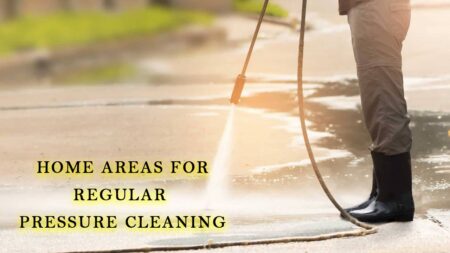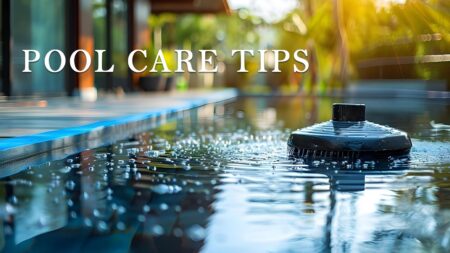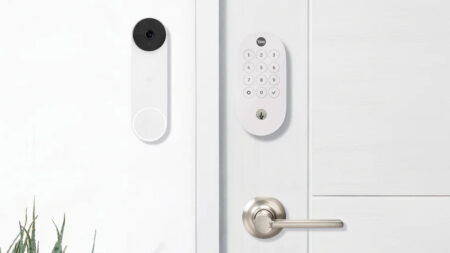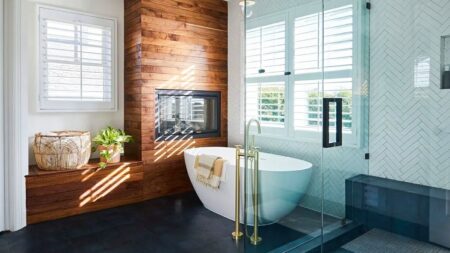The placement of security cameras is critical to ensure effective surveillance and protect your family and property from burglars and vandals. Whether you already own a security camera or are looking to purchase one, it’s essential to know the best places to position them. For those new to the industry, using security camera placement software or apps can be extremely helpful in determining the optimal location for your cameras and making adjustments until you are satisfied with the coverage.
Things to Know About Home Security Cameras
Height: Security cameras should be placed high enough to capture a wide view of the area but low enough to identify faces and other details.
Sunlight: Direct sunlight can cause glare and affect image quality, so cameras should be positioned away from direct sunlight.
Visibility: Cameras should be visible to deter intruders, but they can also be disguised or hidden for covert surveillance.
Internet: Cameras can be connected to the internet for remote viewing and monitoring, but this can also pose security risks if it is not properly secured.
Weather elements: Outdoor cameras should be weatherproof to withstand rain, snow, and extreme temperatures.
Wireless or wired: Wireless cameras are easier to install and can be placed anywhere, but wired cameras are generally more reliable and offer higher-quality video output.
Night vision: Cameras with infrared or low-light capabilities can capture clear images in the dark.
Storage: Video footage can be stored locally on a DVR or NVR, or in the cloud for remote access and backup. Understand how many days of data you want to store, so you can invest in the correct storage option.
Motion detection: Cameras with motion detection can trigger alerts and recording when motion is detected, which can save storage space and help identify suspicious activity.
Power source: Cameras can be powered by batteries, AC power, or PoE (Power over Ethernet) for wired cameras.
Smart features: Some cameras come with additional features, such as facial recognition, motion detection, and voice control, which can enhance functionality.
Price: Home security cameras are available in a range of price points. Depending on your requirement, you can get a security camera to suit your budget.
Benefits of Outdoor Security Cameras
Deter crime: Outdoor security cameras can help deter crime by providing visible evidence that the property is monitored and intruders are being watched.
Prevent vandalism: Cameras can help prevent vandalism and property damage by capturing evidence of any incidents that occur.
Monitor activity: Outdoor cameras can be used to monitor activity around a property, providing a visual record of any visitors or deliveries.
Increase safety: Cameras can help increase safety by providing visibility of potential hazards and monitoring for suspicious activity.
Remote monitoring: Many outdoor security cameras can be accessed and monitored remotely, allowing homeowners or property managers to check on the property from anywhere with an internet connection.
Alerts for emergency situations: Some home security cameras can be integrated with a home security system and other smart home devices to provide alerts in the event of emergencies such as fires, carbon monoxide leaks, or flooding. This can help you respond quickly and take action to protect your home and family.
Helps keep an eye on elderly or disabled family members: Home security cameras can be used to keep an eye on elderly or disabled family members who may require assistance or monitoring. With remote access, family members can check on their loved ones from anywhere and ensure they are safe and well.
Insurance benefits: Insurance companies may offer discounts for businesses and homeowners who have security cameras installed because the presence of cameras is considered a proactive measure to reduce the risk of loss. By reducing the risk of a break-in or theft, the insurance company may consider the property less risky to insure.
Evidence for investigations: If a crime or incident does occur, the footage from outdoor security cameras can provide valuable evidence for police investigations and insurance claims.
Peace of mind: Finally, having outdoor security cameras can provide peace of mind for property owners and residents, knowing that their property is being monitored and protected.
Best Placement Location for Home Security Cameras
Main entrance (front door)
The easiest way for burglars to enter your home is through the main entrance, which is also the source of the majority of break-ins. So, consider installing a home security camera at your house’s main door. However, to protect your CCTV cameras from potential damage, it is advisable to either mount them on the second floor or surround them with a wire cage.
Alternate entry points
All-access points to your property should be considered potential entryways for intruders. To ensure maximum security, consider installing cameras on all doors, as these are often the weakest points of entry. To protect against tampering, follow the same safety measures as previously mentioned, such as mounting cameras at a higher level or encasing them in a wire cage.
Additionally, patio and French doors are particularly vulnerable to break-ins. To reinforce their security, consider using thick glass and strategically placing a CCTV camera for added surveillance.
Garage
Many individuals may overlook the importance of monitoring their garage, but it is a common entry point for burglars. Hence, it is crucial to secure it, regardless of the contents. Installing a camera facing the driveway or garage area can be useful for detecting any suspicious activity. Another option is to place a camera inside the garage, angled in such a way that the light from the opening door illuminates the interior. This way, you can maintain surveillance even in low-light conditions.
Off-street windows
Windows that are not visible from a public street or road may be enticing to criminals due to the lack of visibility. In addition to cameras, as a supplementary security measure, it is important to always keep your windows closed and locked when you leave the property. Neglecting your windows can leave them vulnerable to break-ins.
Garden/Yard
Gardens often contain valuable items, whether it be expensive gardening equipment in a shed or play equipment for children. To protect this area, consider installing several strategically placed cameras and security lights. These elements can serve as effective deterrents, discouraging potential intruders from accessing your garden. By taking these precautions, you can ensure the safety and security of your outdoor space.
Indoors
Contrary to popular belief, CCTV cameras are not just for outdoor use. Installing a camera inside your home, aimed at doors or windows, can capture footage of an intruder entering your property and provide a clear view of their face for identification purposes.
However, the drawback of having indoor cameras is that they are not as visibly deterrent, as a criminal would need to enter the property before becoming aware of their presence.
Also Read: Best Smart Home Devices of 2022
Other Places You May Consider Putting CCTV Cameras
By installing security cameras at your front door, back door, and off-street windows, you have already deterred approximately 80 percent of potential burglars. To further increase the safety of your home, you may also want to consider adding cameras to the:
- Second floor
- Basement
- Driveways
- Backyard
Wondering how many security cameras to install in these areas? Well, it depends on the type of security camera(s) you’re using and how you install the camera(s) in and around your house.
Important Home Security Camera Placement Tips
Optimize camera placement
Proper placement of home security cameras is crucial for effective security. To ensure their durability and functionality, it is important to keep cameras out of reach and away from potential harm.
For exterior cameras, mount them at a height of at least nine feet above the ground, on a second-story level. Interior cameras should be located near the ceiling, where they cannot be easily knocked down or tampered with.
It is also important to secure the cameras properly to prevent them from being damaged or removed. Some cameras may be attached to surfaces using adhesives, but for added stability, it is recommended to screw them directly into a wall.
Properly angle cameras
In addition to proper placement, it is also important to correctly angle your home security cameras. If cameras are installed directly above windows or doors without proper angling, they may only capture the top of an intruder’s head, defeating the purpose of having cameras in the first place.
For optimal coverage, place cameras a foot or two next to a door or window, and angle them down towards the entrance. The visibility of security cameras can also serve as a deterrent to potential intruders, so don’t be afraid to make them noticeable. This simple step can potentially discourage up to two-thirds of potential break-ins.
Evaluate Wi-Fi signal strength
For those utilizing wireless home security cameras, it is important to assess the Wi-Fi signal strength in and around your home. The cameras must have a stable and strong connection to the Wi-Fi network to capture and transmit footage effectively. Without a proper internet connection, the camera may disconnect from your security system. To ensure clear and uninterrupted footage, check that the Wi-Fi signal is strong and stable in the areas where cameras will be placed.
Best Outdoor Home Security Cameras to Buy in 2023
Now that you know exactly where to place your home security cameras, you need a reliable and cost-effective option. Here we share with you the three best home security cameras to consider installing indoors and outdoors, regardless of your CCTV camera placement.
Wyze Cam (2020) – Best Budget
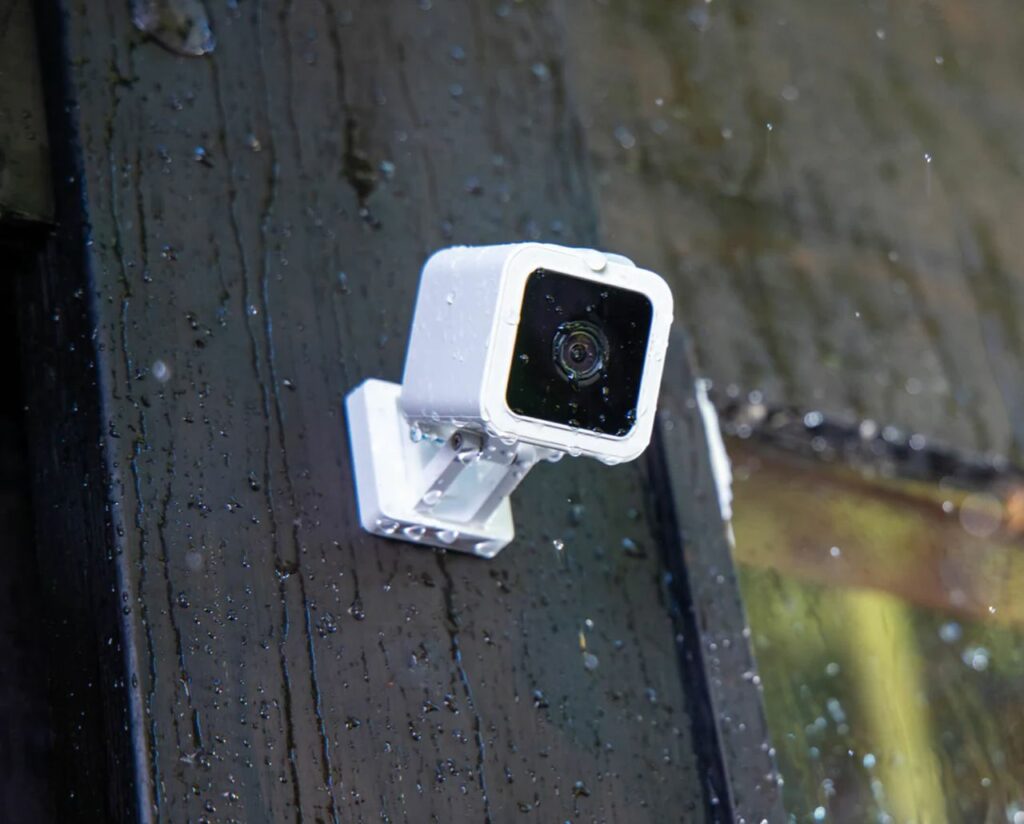
Wyze Cam is a home security camera that was first released in the year 2020. The Wyze Cam is an affordable, feature-rich, and user-friendly camera that can be used to monitor your home or office. With its compact design, the Wyze Cam is easy to install and can be mounted anywhere, allowing you to keep an eye on your home from anywhere in the world.
One of the most notable features of the Wyze Cam is its high-quality video and audio recording capabilities. The camera records in full 1080p HD resolution and has a built-in microphone that enables two-way communication. The Wyze Cam also features night vision capabilities, allowing you to monitor your home even in low-light conditions.
The Wyze Cam is compatible with Amazon Alexa and Google Assistant, allowing you to integrate it into your smart home ecosystem. With these integrations, you can control your Wyze Cam using voice commands, making it even easier to keep an eye on your home.
Another great feature of the Wyze Cam is its cloud storage capabilities. The camera stores recorded footage in the cloud for up to 14 days, giving you peace of mind knowing that your footage is safe and secure. Additionally, the Wyze Cam has a built-in microSD card slot that you can use to store recorded footage locally if you prefer.
Price: $35
Arlo Essential Spotlight Camera – Best Wireless
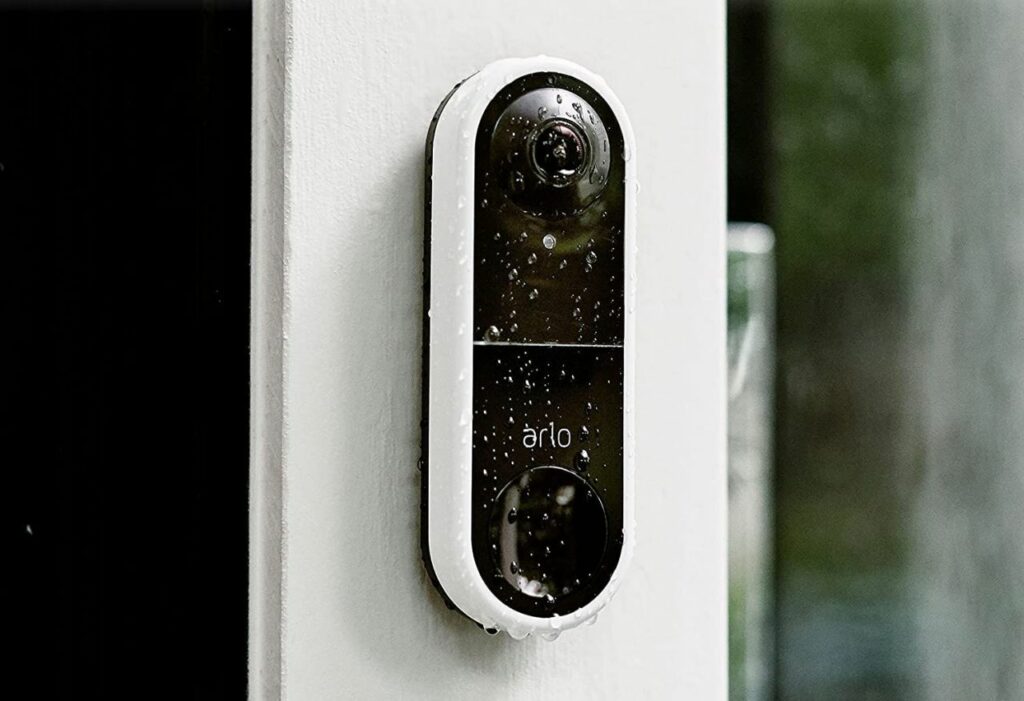
The Arlo Essential is a 1080p outdoor security camera that doesn’t require an extra hub to function and can work for up to six months owing to a built-in rechargeable battery. It features color night vision, a built-in siren, a spotlight, two-way audio, and a 130-degree field of view. You can get a real-time video feed to your smartphone, tablet, or computer, allowing you to see who’s at the door and talk to them, even if you’re not at home.
Some features are limited to a paid subscription service like getting smarter notifications for people, vehicles, packages, and animals right on your phone’s lock screen. The Arlo Essential is compatible with Amazon Alexa, Google Assistant, Apple HomeKit, and Samsung SmartThings, making it easy to integrate with your existing smart home system. It takes about 15 minutes to set up and install this compact wireless camera.
Overall, the Arlo Essential is a highly effective and versatile home security device that provides a comprehensive view of your front door and gives you peace of mind when you’re away from home.
Price: $160
Google Nest Cam Outdoor – Best Overall
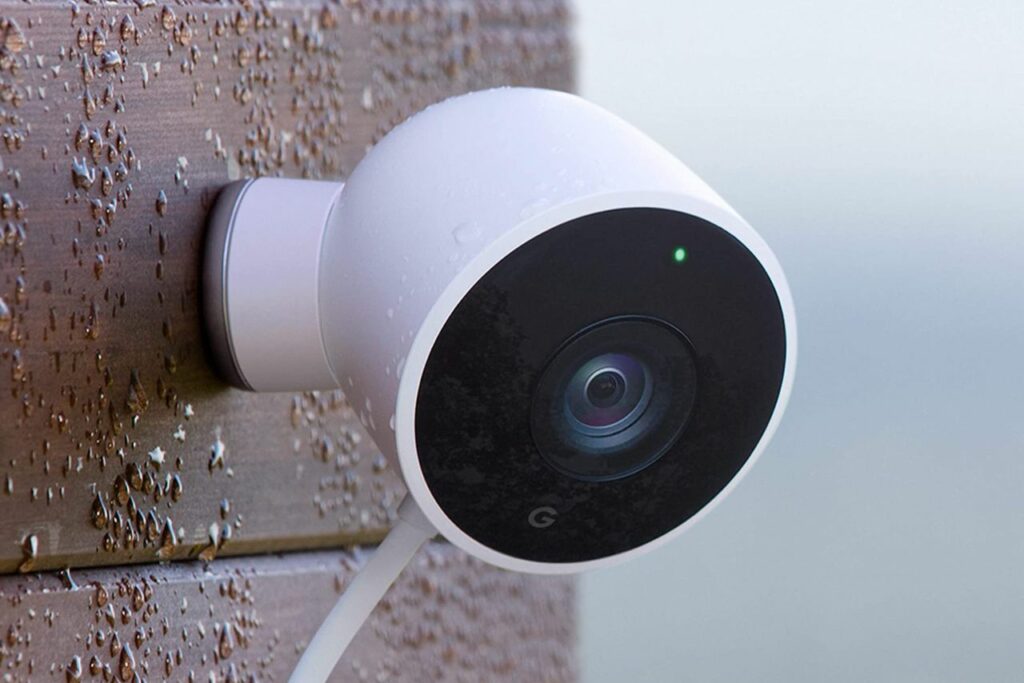
Google Nest wired security camera is designed to keep an eye on your home when you’re away, giving you peace of mind and providing a record of any activity in your absence. If it finds suspicious motion or sound at home, you get notifications on the phone. There is a built-in mic and speaker so that you can speak to visitors at the front door.
The camera features a sleek and compact design that can easily blend in with your home décor. It comes with a magnetic base that allows you to place it anywhere you need it. The camera has a 130-degree field of view, which provides a wide-angle view of the room and helps you to see the entire space in 1080p HD video.
One of the key features of the Nest Cam Indoor is its 24/7 live streaming capability. You can access the live video feed from your smartphone, tablet, or computer, and receive notifications whenever the camera detects motion or sound. The camera also has night vision capabilities, so you can keep an eye on things even in low-light conditions.
The Nest Cam Indoor is easy to set up and use. It connects to your home’s Wi-Fi network, and the Nest app guides you through the process. You can control the camera and access the live video feed from anywhere, as long as you have an internet connection.
Another great feature of the Nest Cam Outdoor is its integration with Google Assistant and Amazon Alexa. You can control the camera using voice commands, and the camera’s live video feed can be displayed on compatible smart displays like the Google Nest Hub.
The Nest Cam Outdoor (Wired) is a great choice for those looking for a reliable and easy-to-use home security camera. With its sleek design, 24/7 live streaming, night vision, and integration with Google Assistant and Amazon Alexa, it provides peace of mind and a convenient way to keep an eye on your home when you’re away.
Price: $175
FAQs About Home Security Cameras
There are several types of security cameras available for home use, including wired and wireless cameras, indoor and outdoor cameras, and standalone cameras and camera systems.
When choosing a security camera for your home, consider factors such as the intended location, the level of security you require, your budget, and any specific features or capabilities you need, such as night vision or remote monitoring.
Many home security cameras and camera systems can be installed by homeowners themselves, although a professional installer may be needed for stiffer tasks and for setting up larger security systems.
Yes, security cameras can be used for a variety of purposes beyond security, including monitoring children or pets, checking on elderly or disabled family members, or keeping an eye on contractors or workers on the property.
The use of home security cameras is generally legal, although there may be restrictions on their use in certain areas or circumstances. Be sure to read the local laws and regulations before installing security cameras in your home.
Like any internet-connected device, security cameras can potentially be hacked if not properly secured. Anyone looking to break into security cameras can use the IP address hack. So, it’s important to follow best practices to secure your network and devices, such as using strong passwords, enabling two-factor authentication, and keeping software up to date.
The length of time that security camera footage can be stored will depend on the capacity of the storage device and the recording settings. Many cameras and camera systems allow for both local and cloud storage, and footage can typically be accessed and reviewed for several days or weeks.
Some home security cameras are equipped with audio recording capabilities, although it’s important to be aware of any legal restrictions on recording audio in your area.
Many home security cameras and camera systems offer remote access and monitoring through a mobile app or web portal. You may need to set up an account and connect your cameras to your home network to enable remote access.
Yes, many home security cameras feature motion detection technology and can be configured to send alerts or notifications when motion is detected. This can be a useful way to monitor for suspicious activity or keep tabs on who is coming and going from your property.
Follow Homecrux on Google News!

